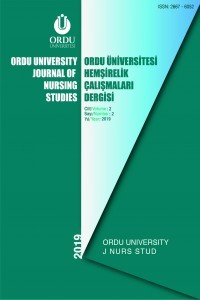
Ordu Üniversitesi Hemşirelik Çalışmaları Dergisi
Yazarlar: Nülüfer ERBİL, Mehtap GÜMÜŞAY, Eda SALMAN
Konular:Hemşirelik
DOI:10.38108/ouhcd.714737
Anahtar Kelimeler:Internet addiction,Nursing student,Affecting factor
Özet: Objective: This study was conducted to determine the level of internet addiction of nursing students and affecting factors. Methods: This descriptive study included 242 university students who studied the 2nd, 3rd and 4th grades of the nursing department and agreed to participate in the study. The Personal Information Form prepared by the researchers and Internet Addiction Scale (IAS) were used to collect the data. Descriptive statistical methods, Mann-Whitney U test, Kruskal Wallis test and Spearman Correlation test were used to evaluation of the data. Results: It is determined that the average age of the students was 21.19±1.57, 74% were girls and 36% were 3rd grade students. The average age of students to start using the internet was 12.62±2.30. The students have their own mobile phones for an average of 8.09±2.65 years, 96.7% stated that they use smartphones, 74.4% stated that the best technological devices are smartphones, 49.6% stated that they connect to the internet 2-4 hours a day. 93% of the students were connected to the internet by phone and 71.5% of them were connected for the most “social media use”. IAS total score of the students was 34.16±11.57. 81.8% of students had a “low level” of internet addiction, 16.9% had a “medium level” and 1.2% had a high level internet addiction. It was determined that the level of internet addiction and the deterioration in social relations increased as the smartphone usage time increased. Conclusion: It was observed that nursing students used the internet mostly for social media and four of the five students had low internet addiction levels. However, it has been found that as the time to use the smartphone increases, loss of control, desire to stay online, negativity in social relations and consequently internet addiction increase.